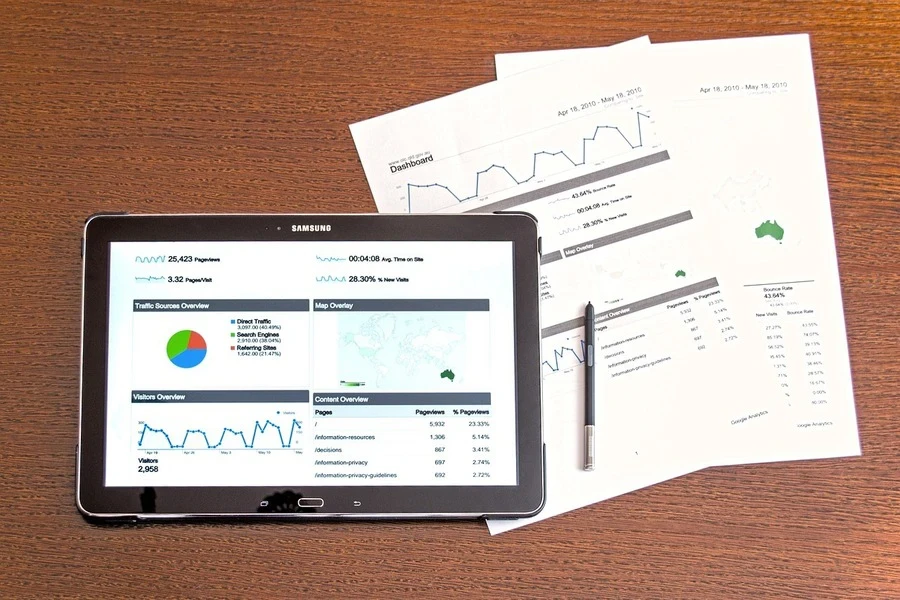A business’s visibility on the internet is in many ways paramount to its success. And while companies might feel overwhelmed by the vast expanse of the online world, the journey and methods to try to stand apart from the crowd aren’t as exhausting as they may initially sound.
So, while Google does have a dynamic algorithm that changes frequently, once a business finds a way to stay in the loop, there are a number of ways they can scale their conversions. Clever strategies and a determination to stay ahead of competitors can help enterprises grab more eyeballs, helping them boost conversions and brand popularity.
In this article, we’ll detail some ways you can do just that via a Google Business Profile.
Table of Contents
What is a Google Business Profile?
The importance of Google Business Profiles for SEO
How to set up a Google Business page
Tips for increasing organic visits to a Google Business Profile
Conclusion
What is a Google Business Profile?

Google Business Profile allows companies to create and manage their online Google listings. These listings pop up when customers search for your business name or relevant keywords on Google Search or Maps. Your profile includes the business name, phone number, address, website, operating hours, and customer feedback.
A well-optimized Google Business Profile can allow local companies to stand out. Whether you want to increase foot traffic, enhance your brand presence, or increase website traffic, a well-optimized profile is your success ticket. The credibility and trust you build with your audience can take you to your targets.
The importance of Google Business Profiles for SEO
As we enter 2025, it is time to realize that Google Business Profiles play a pivotal role in the success stories of businesses everywhere. If a company can compel its prospects to check out the GBP, there is over 50% chance they will also visit the website (Source). On average, a verified GBP receives about 200 monthly interactions (clicks) (Bird Eye).
Bird Eye also states that verified businesses receive about 595 yearly calls from their GBPs. They serve as a digital storefront that customers check out before visiting the physical location. On the other hand, an incomplete or poorly organized Google Business Profile can lead to a massive bounce rate. Customers would scroll past the profiles without a second thought.
Profile optimization helps Google understand your business, improving local search rankings. It attracts more customer clicks and builds user trust by providing precise and relevant information. It won’t be false to state that optimizing Google Business Profiles is super essential for businesses, too. The insights obtained can help to improve marketing strategies, customer experience, and growth. As a result, companies can stay adaptable and have a competitive edge in the digital landscape.
How to set up a Google Business page

Step 1: Claim your Google Business Profile
The first step is to “claim” your profile. This requires searching for your business and clicking the “manage now” option. Then, follow the steps to take ownership of the profile and finish the verification process via mail, phone, or email.
Step 2: Enter complete business information
Local results favor the most relevant results for the search. Make sure all the business info is correct and updated. This makes it easier for people to find their desired business when searching for it.
- Name: Use the exact same name used on the store or office
- Address: Double-check this is correct so customers can find the business easily
- Phone number: Provide a number people can call during work hours
- Website: Add a website so people can visit it from your Google profile
- Hours of operation: List your business’s opening hours, making sure to note any special holiday hours
- Business category: Pick the best category that describes what your business does.
Step 3: Use quality visuals
Visual content is now an important engagement tool. Post high-quality images of your products, services, and even your team at work. Some businesses also use a photo of their storefront as the cover photo for Google, Yelp, and Facebook. People who use Google Maps can use these to easily spot your business while driving.
When taking photos, help show your business in a favorable light by:
- Making sure people can easily see the business name or logo clearly
- Showing products in a behind-the-scenes setting
- Making sure your products are centered so that they’re not cropped by other sites
- Taking horizontal photos over vertical, as most websites use the former
Step 4: Write a solid business description
Add a custom description of up to 750 words to appear across Google services, including Maps and searches. This should be a straightforward summary of the business and what it offers, highlighting your unique advantages and any distinctive services or products. Including relevant keywords will help boost your profile when people search for similar products or services.
Step 5: Use the Google “Posts” feature
Google Business Profiles allow businesses to create posts that appear in their profile. Use these to share business milestones, events, promotions, or blog posts. Regularly posting relevant content keeps your profile active and engaging. This can help grow your audience and boost your profile’s visibility in local search results.
Tips for increasing organic visits to a Google Business Profile

Once your profile is set up, it’s time to take steps to boost organic traffic. A few proven strategies are as follows:
Encourage and respond to the reviews
Positive reviews can significantly influence potential customers when choosing a business.
While customers can provide reviews directly via Business Profile or Google Maps, for businesses, sharing a review link is the most proactive method to encourage more reviews. Incorporate the link into email marketing templates, post it on social media, or generate a shortened link for display on in-store signage.
Responding to all reviews, whether positive or negative, is both possible and advisable. Search by Ipsos indicates that customer reviews remain the most reliable source of information when assessing a product or business.
In the case of positive reviews, expressing gratitude to the customer for sharing their experience is recommended. For negative reviews, it is equally important to thank the customer and address their concerns honestly, attempting to offer a solution or remedy if appropriate.
Use relevant keywords
Research targeted keywords with tools like SEMRush or Google Keyword Planner. The objective isn’t to cram a profile with as many keywords as possible solely to improve rankings (this can even negatively impact rankings); using them seamlessly into sentences is crucial.
Ensure the keywords align with local search keywords like “near me.” A Google’s Consumer Insights team study shows that mobile searches combining “where to buy” and “near me” have increased by more than 200% in the past two years. Additionally, SEMRush reports that over 1 billion searches in the US incorporate the phrase “near me” every month.
Use Google Business categories
Selecting the right categories is vital for a business to appear in relevant searches. Alongside the primary category, using secondary categories that reflect other facets of the company is beneficial. This expands the profile reach and enhances the chances of appearing in diverse search queries.
Regularly update your business information
Updating your Google Business Profile can be as important as establishing it in the first place. Maintaining up-to-date business hours, adding new photos, and sharing fresh content are all recommended so as to keep customers abreast of changes. In addition, Google favors active profiles, so consistent updates can benefit local rankings and attract organic traffic.
Conclusion

A well-optimized Google Business Profile is an important tool in a business’s arsenal, helping to increase local visibility and attract organic traffic.
However, keep in mind that consistency is fundamental to achieving these goals. By regularly updating your profile, responding to customer feedback, and closely watching your business performance, you stand a better chance of standing out from and outperforming your competitors.




